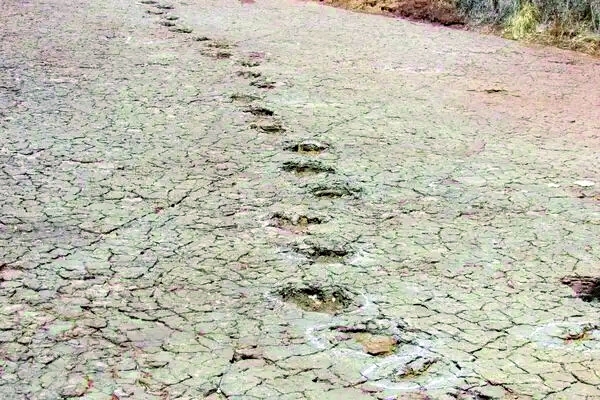Our Terms & Conditions | Our Privacy Policy
Scientists Discover Similar Dinosaur Footprints on Opposite Sides of the Atlantic
They may be an ocean apart, but dinosaur footprints found in South America and Africa are so similar that their discovery suggests dinosaurs may have roamed a narrow corridor that connected the two continents before they split.
Researchers found more than 260 footprints more than 3,700 miles apart in Brazil and Cameroon that were preserved in mud and silt where ancient rivers and lakes once stood, according to a study published by the New Mexico Museum of Natural History and Science. The tracks were made 120 million years ago when Africa and South America were still connected as part of a supercontinent called Gondwana.
The Borborema Plateau in northeastern Brazil and the Koum Basin in northern Cameroon contain similar geological structures that preserved dinosaur prints. The footprints discovered in those areas were similar in age, shape and geological context, said Dr. Louis L. Jacobs, a paleontologist at Southern Methodist University in Texas and the study’s lead author. It is not surprising to make similar discoveries in regions that were once connected, Jacobs said, but the dinosaur tracks help us understand the geologic history of a region that broke apart millions of years ago.
The paper shows a “specific place at a specific time with specific climatic conditions and environmental conditions” that can help show how animals may have moved across the stretch of land between Cameroon and Brazil before Gondwana broke apart.
Jacobs worked with an international team to determine the age of footprints he had previously found in Cameroon by studying the rocks in which they were preserved. They then looked at records of dinosaur tracks in Brazil, where the continents were once joined.
Most of the footprints were created by three-toed theropod carnivores, which tended to be bipedal. Some were made by long-neck sauropods or ornithischians, a diverse superfamily of herbivores, according to Diana P. Vineyard, a research associate at Southern Methodist University and co-author of the study. — ALEXANDRA E. PETRI / NYT
Images are for reference only.Images and contents gathered automatic from google or 3rd party sources.All rights on the images and contents are with their legal original owners.



Comments are closed.